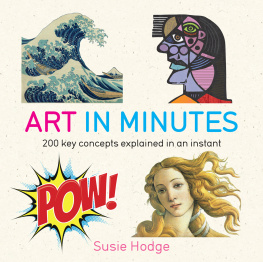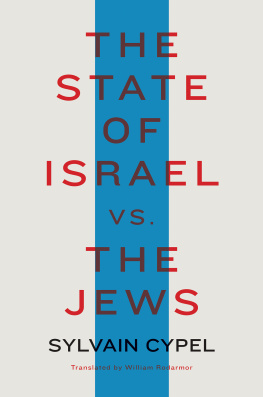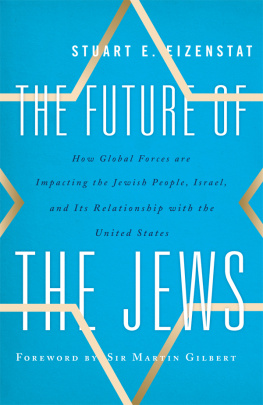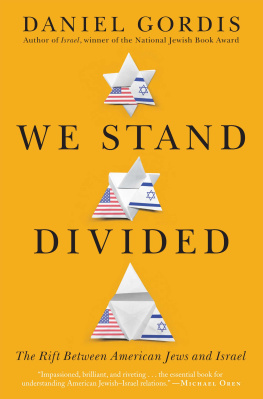
E-book published in 2012 by Encyclopdia Britannica, Inc., in association with Arcturus Publishing Limited, 26/27 Bickels Yard, 151-153 Bermondsey Street, London SE1 3HA. Britannica, Encyclopdia Britannica, and the Thistle logo are registered trademarks of Encyclopdia Britannica, Inc.
ISBN 978-1-61535-638-6 (e-book)
This edition first published by Arcturus Publishing
Distributed by Black Rabbit Books
P.O. Box 3263
Mankato
Minnesota MN 56002
Copyright 2008 Arcturus Publishing Limited
Library of Congress Cataloging-in-Publication Data
Hodge, Susie, 1960
Israel / Susie Hodge.
p. cm. -- (Changing world)
1. Israel--Juvenile literature. I. Title.
DS118.H78 2009
956.94--dc22
2008016659s
The right of Susie Hodge to be identified as the author of this work has been asserted by her in accordance with the Copyright, Designs and Patents Act 1988.
All rights reserved.
Series concept: Alex Woolf
Editor: Alex Woolf
Designer: Ian Winton
Picture credits:
Corbis: cover left (Jon Jones/Sygma), cover right (Jerome Sessini), 10 (Bettmann), 12 (David Rubinger), 13 (Reuters), 14 (Yonathan Weitzman/Reuters), 15 (Annie Griffiths Belt), 16 (Ricki Rosen), 18 (Ted Spiegel), 19 (Reuters), 20 (Wolfgang Kumm/dpa), 21 (Jim Hollander/epa), 22 (Ricki Rosen/Corbis Saba), 23 (Peter Turnley), 24 (Reuters), 25 (Reuters), 26 (Ed Kashi), 27 (Alex Rozkovsky), 29 (Jim Hollander/epa), 31 (Richard T Nowitz), 32 (Kerim Okten/epa), 34 (Justin Lane/epa), 36 (Jim Hollander/epa), 37 (Reuters), 38 (Richard T Nowitz), 40 (Jim Hollander/epa), 42 (Ronen Zvulun/Reuters), 43 (Reuters).
Rex: 30 (Israel Sun).
Shutterstock: 6 (Kavram), 7 (Mary Lane), 11 (Joshua Haviv).
The illustrations on pages 8, 9, 15, 27, 28, and 39 are by Stefan Chabluk.
Cover captions:
Left: An Orthodox Jew prays at the Wailing Wall in Jerusalem.
Right: Children play on the beach of Ashdod on Israels Mediterranean coast.
Every attempt has been made to clear copyright. Should there be any inadvertent omission, please apply to the copyright holder for rectification.
Contents
CHAPTER 1
Introduction

I srael is a small country in the Middle East that occupies a narrow strip of territory at the eastern end of the Mediterranean Sea. Known to many as the Holy Land, Israel is situated in a land of central importance to three of the worlds major religionsJudaism, Christianity and Islamand in 1948, it was established as the worlds only Jewish state. Since then, from being a sparsely occupied country, its population has increased over eight times to nearly 7 million. The sheer number of new inhabitants has generated many changes in the countrysocial, economic, and cultural.
PHYSICAL GEOGRAPHY
Area:
total: 8,020 sq mi (20,770 sq km)
land: 7,850 sq mi (20,330 sq km)
water: 170 sq mi (440 sq km)
Highest point: Har Meron, 3,963 ft (1,208 m)
Lowest point: Dead Sea, 1,338 ft (408 m)
Land boundaries:
total: 393 sq mi (1,017 km)
border countries: Egypt, 165 miles (266 km); Gaza Strip, 32 miles (51 km); Jordan, 148 miles (238 km); Lebanon, 49 miles (79 km); Syria, 47 miles (76 km); West Bank, 190 miles (307 km)
Coastline: 169 miles (273 km)
Source: CIA World Factbook, 2008

The Negev Desert takes up most of the southern half of Israel. It is a rocky desert full of mountains, sandy plains, wadis (dry riverbeds that flow briefly after rain), and deep craters.

This is a hillside in northern Galilee. Some parts of this mountainous region reach heights of over 3,936 ft (1,200 m). In between the highlands lie small, fertile valleys, dotted with orchards and vineyards.
Three continents
Israel is situated at the meeting place of three continentsAfrica, Asia, and Europe. It is part of Asia, while neighboring Egypt belongs to Africa. The long, narrow country contains fertile valleys, barren deserts, large lakes, rocky mountains and scenic coasts. It measures some 279 mi (450 km) north to south, from the northern village of Metulla on the Lebanese border to the southern city of Elat on the Red Sea. At its widest, near the desert city of Beersheba, Israel is only 112 mi (180 km) from east to west.
A sandy Mediterranean coastline forms the entire western side, and its land borders meet the four Arab countries of Lebanon, Syria, Jordan, and Egypt. In the south, a huge triangle of land known as the Negev Desert narrows at the port of Elat on the Gulf of Aqaba. It also contains two lakes that are so enormous they are called seas: the Dead Sea and the Sea of Galilee. Both are fed by the Jordan River. The Sea of Galilee is a freshwater lake, and the Dead Sea is the worlds saltiest lake.
Valley beneath the Sea
At the bottom of the Dead Sea is the Great Rift Valley, a massive crack in the earths crust that runs from Syria to southern Africa. It runs almost in a straight line from north to south, along the entire eastern edge of the country. Israels major rivers are the Jordan, Qishon, Yarqon, and Yarmuk. The Jordan River forms part of the countrys eastern border, dividing Israel from the country of Jordan. Most of the other waterways are seasonal streams called wadis, which flow for part of the year and dry up for the rest. Since 1967, Israel has also governed some other areas of land. These are the Golan Heights in the northeast, the West Bank in the east, and (until 2005) the Gaza Strip in the southwest. Jerusalem, the capital city, is 262 ft (800 m) high in the Judean mountain range.

This chart shows the climate of Jerusalem. Situated in Israels central upland area, temperatures here are marginally cooler than on the coastal plain.
Climate
Israel has a Mediterranean climate, with long, hot, dry summers and mild, wet winters. Between May and September there is hardly any rain at all, and about 70 percent of the years rain falls between November and February, mainly in the north and west. In high mountain areas, such as Jerusalem, some light snow occasionally falls in winter. Summers are hot and fairly dry in the mountainous regions but are more humid on the coastal plain. Sometimes, in late spring and autumn, hot, dry, dusty air moves in from the east and sends temperatures soaring. This wind is known as the sharay in Hebrew and the hamsin in Arabic.
Culture
Israel is a unique blend of ancient and modernthe old lands that are described in the Bible and the new, vibrant, developing nation. Its culture reflects the diversity of its immigrant population, who have brought their customs and traditions from many different places, including Eastern Europe, Russia, the Middle East, and North Africa. Although Israel is officially a Jewish state, people of other faiths also live there. About 76 percent of the population is Jewish (about a third of the worlds Jews), 16 percent is Muslim, and the rest is made up of Christians, Druze, and Bedouin. Each community preserves its own culture, including religious worship, food, art, literature, and social contact. Because the two main groups of people are Jews and Arabs, the official languages of the country are Hebrew and Arabic. Many Israelis speak both languages, as well as English. Many others still speak the languages of the countries they came from.
Next page















